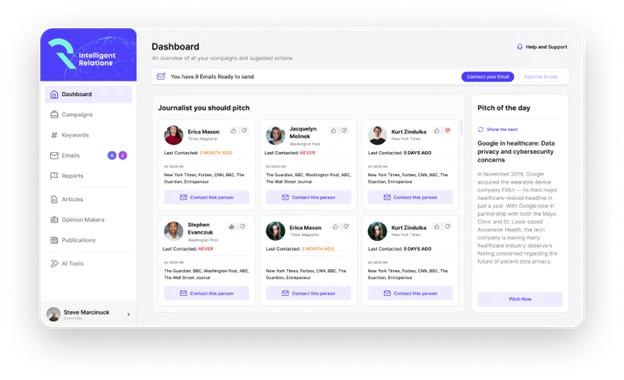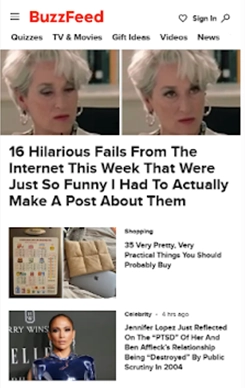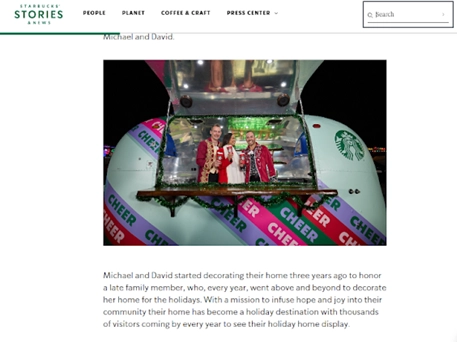8 Current Millennial Marketing Trends and Strategies (+ Examples & Tips)
- Home
- Intelligent Insights Blog
- 8 Current Millennial Marketing Trends and Strategies (+ Examples & Tips)
A “Millennial” refers to a person born roughly between the early 1980s and the late 1990s to early 2000s. This generational cohort follows Generation X and precedes Generation Z.
So, what makes this generation so unique when it comes to marketing?
For starters, Millennials are extremely adept with technology and are often skeptical of traditional marketing and advertising methods.
For example, they may use ad blockers or choose to skip or ignore traditional ads.
Superficial or overly promotional content often fails to resonate with this group. They prefer brands that are genuine in their messaging and transparent about their practices.
Additionally, many Millennials favor experiences over material possessions. They are more likely to spend money on travel, dining, and cultural experiences.
As a marketer, you’ll need to create campaigns and content that align with these preferences.
Plus, you’ll need to know which digital channels and platforms Millennials use the most to actively engage with them.
To help you through the process, we’ve outlined 8 of the top Millennial marketing trends for 2024. Plus, you’ll find examples and tips, so you understand how each trend works.
Ready to upgrade your PR and marketing mix with these trends for 2024?
Let us help! Book a free consultation with us and one of our PR and marketing experts will take a look at your current strategy to see where it could use a boost to be more attractive to your Millennial demographic.
Millennial Marketing Trends 2024
- Public Relations
- Social Media
- Influencer Marketing
- Personalized Experiences
- Mobile-First
- User-Generated Content
- Video Content
- Purpose-Driven Campaigns
1. Public Relations is an Excellent Way to Demonstrate Authenticity
What makes public relations (PR) one of the top Millennial marketing trends? Millennials highly value authenticity in brands, and PR is an excellent way to deliver that authenticity.
PR allows for storytelling and brand messaging that feels genuine and trustworthy. This is more valuable than overtly promotional or sales-driven content.
PR strategies often involve sharing stories and insights that resonate on a personal level. This is crucial for engaging Millennials. Plus, you can use PR to address any scrutiny or concerns raised by Millennials.
When leveraging PR, use your digital channels to narrate your brand’s journey and values. Also, convey the impact of your products or services.
To make your message more convenient, be sure to vary your PR content. That can include up-to-date press releases, social media posts, thought leadership articles, and videos.
Plus, you’ll want to connect with media outlets most frequently read by Millennials. That includes Vice, The Daily Aus, BuzzFeed, and many others.
To find out which journalists are most relevant to your brand, you can use a tool like Intelligent Relations’ Preston AI platform:

Pro Tip: Be open about your brand’s journey, including both successes and challenges. Share behind-the-scenes glimpses, discuss the product development process, or the ethos behind your brand. Make sure you only contact relevant journalists who write about such things.
Ready to get started on a PR strategy for your brand? Learn more about what’s trending in 2024 by checking out our article: 18 Top PR Trends Shaping the Industry in 2024
2. Social Media is a Go-To for Millennials
Millennials are digital natives, making social media one of the leading Millennial marketing trends. In fact, Millennials make up a significant portion of social media users.
Around 45% of them use social media for news intake. That includes platforms such as Instagram, Facebook, TikTok, and Twitter.
Plus, Millennials prefer digital communication and are more likely to engage with brands online. Social media offers an interactive and engaging way for your brand to communicate with this demographic.
The benefit for you? Social media provides customers with instant access to information and real-time engagement. You can quickly respond to trends, feedback, and customer inquiries. This level of engagement aligns with Millennials’ expectations for immediacy and interactivity.
Ready to get started on social media as one of your Millennial marketing trends?
When using social media, leverage the power of visuals. That includes photos, videos, infographics, and live streams. Millennials are drawn to visually appealing and engaging content that tells a story or provides an experience.
Here is an example from Culture Millennials on Instagram:

Pro Tip: Create content that encourages interaction. This can include polls, quizzes, and Q&A sessions. Millennials appreciate being part of a two-way conversation rather than passive receivers of information.
If you’re looking to upgrade your social media strategy in general, check out this article: 9 Top Social Media Marketing Trends Taking the World by Storm
3. Influencer Marketing is More Effective Than Traditional Methods
Millennials tend to trust influencers more than traditional advertisements or celebrity endorsements. That’s what makes influencer marketing one of the most important Millennial marketing trends.
How do you adopt this trend?
Keep in mind that influencers who have built their following based on authenticity and expertise in a specific niche are viewed as more relatable. So, instead of finding the biggest influencer, it’s sometimes better to find the most relevant micro influencers.
Plus, micro influencers are skilled at creating content that resonates with audiences. They know how to present products or services in a way that is engaging and entertaining.
Consider working with micro-influencers who often boast higher engagement rates and niche audiences. While they have a smaller following, Millennials perceive their recommendations as more trustworthy than larger influencers.
That’s because Millennials value the opinions and recommendations of their peers, and they often perceive influencers as peers or relatable figures. This gives influencers the power to sway opinions and drive trends within this demographic.
Just be sure to select influencers who genuinely resonate with your brand values and have a real connection with their audience. It’s even better if you can connect with influencers who use or relate to your products.
Rosanna Pansino is one of the top Millennial influencers in the digital space:
Pro Tip: Build long-term relationships with influencers instead of one-off campaigns. Consistent collaboration allows for more authentic integration of your brand into the influencer’s content. This makes promotions feel more natural to their audience.
Want more ideas for influencer marketing? Check out our article: 9 Top Influencer Marketing Trends Shaping the Industry in 2024
4. Personalized Experiences Matter More Than a One-Size-Fits-All Strategy
Millennials have grown up in a digital age where customization and personalization are the norm, not the exception. That’s why personalized experiences are among the top Millennial marketing trends.
Millennials expect brands to know their preferences and cater to them. This can include everything from product recommendations to personalized communication.
Plus, personalized experiences resonate more deeply with Millennials, leading to stronger engagement. This demographic is more likely to become loyal to a brand that demonstrates an understanding of their individual needs and desires.
To create personalized experiences, utilize data analytics to understand the preferences and behaviors of your millennial audience. This can guide the customization of your marketing messages. This makes them more relevant and engaging for individual users.
Use the information you gather from interactive content such as quizzes, polls, or personalized videos. This approach captures the attention of Millennials and provides valuable insights into their preferences.
One example of personalized marketing is Nike’s 3D printing service for personalized sneaker accessories:
Pro Tip: You can also use past interactions and purchase history to offer personalized product or service recommendations. This shows millennials that you understand their unique needs and preferences.
5. Mobile-First is One of the Best Ways to Reach Millennials
Millennials are known for their extensive use of smartphones, making mobile-first one of the most important Millennial marketing trends.
Millennials often rely on their mobile devices for a variety of activities. That includes watching videos, using social networks, listening to music, playing games, and much more.
Additionally, Millennials value convenience and instant access to information. A mobile-first approach caters to this need by providing content and experiences optimized for on-the-go consumption.
When using a mobile-first strategy, ensure that your marketing content is fully optimized for mobile. This includes having a responsive website design, fast loading times, and easily navigable interfaces.
Design your mobile interfaces with user experience in mind. Simple, intuitive, and aesthetically pleasing designs are more likely to engage Millennials. Avoid clutter and ensure key information is easily accessible and clickable.
BuzzFeed is a great example of a mobile-friendly website. Here is an example of what it looks like:

Pro-Tip: Take advantage of mobile-specific features such as geolocation targeting, push notifications, and augmented reality. These features can create more personalized and immersive experiences for millennials.
Need to upgrade your mobile marketing strategy? Find more tips and ideas for mobile marketing with our article: 9 Top Mobile App Marketing Trends of 2024 (+ Tips and Examples)
6. User-Generated Content Keeps Millennials Engaged in Your Brand
User-generated content (UGC) is one of the top Millennial marketing trends because it’s seen as more authentic and genuine than branded content.
UGC is also social proof. It showcases real people using a product or service. This builds a sense of community and connection, which is highly valued by Millennials.
Additionally, UGC provides your brand with a cost-effective way to generate content with a potentially wide reach. It leverages the creative power of the community around your brand, often resulting in diverse and compelling content.
When integrating UGC into your strategy, create campaigns that invite Millennials to share their genuine experiences with your brand. Encourage real stories, photos, and videos that reflect their true engagement with your products or services.
Engage Millennials by hosting contests or challenges that prompt them to create content. These activities can be fun and offer incentives. This makes them more likely to participate and share their creations with you and others.
One example of UGC is Starbucks’s Contest for Holiday Cheermakers in partnership with Milian:

Pro Tip: Feature UGC on your website, social media channels, or in advertising campaigns. Highlight customer contributions to validate their effort. Also, demonstrate that you value their input and engagement.
Feel your overall content marketing strategy could use a boost in 2024? We’ve got you covered! Read more here: 7 Top Content Marketing Trends 2024 [+ Tips and Tricks]
7. Video Content Provides Information on the Go
Growing up around digital technology, Millennials are very comfortable with video content. That’s why video is among the top Millennial marketing trends.
Millennials spend significant time streaming videos, making it a prime medium for engagement.
This generation shows a strong preference for visual and interactive content over text-heavy formats. Being highly visual and dynamic, videos align well with these preferences.
Plus, Millennials often prefer quick, digestible content. Consider creating short-form videos that capture attention within the first few seconds. Platforms such as TikTok and Instagram Reels are ideal for this kind of content.
Make sure your videos start with a hook to grab your audience’s attention. Use a strong visual, a surprising fact, an intriguing question, or an engaging piece of dialogue right at the beginning.
Here is an example of a video that would appeal to Millennials:
Pro Tip: A strong ending is just as important as a good start. End your videos with a call to action. This could be an invitation to comment, share, follow, or check out more content. Also, consider closing with a teaser for your next video to keep the audience coming back for more.
Want to see what’s new for video marketing in 2024? Need more video marketing ideas? Read our article: Top 10 Video Marketing Trends for 2024 [+ Tips]
8. Purpose-Driven Campaigns Allows You To Demonstrate Your Brand’s Values
Millennials, more than previous generations, are more aware of social and environmental issues. They often seek to align their purchases with their values. That’s what makes purpose-driven campaigns one of the leading Millennial marketing trends.
Millennials prefer brands that demonstrate a commitment to social, environmental, and ethical issues. Purpose-driven campaigns that highlight these values resonate deeply with them.
Purpose-driven campaigns often tell real stories. They showcase genuine efforts to make a difference and avoid superficial marketing tactics. This appeals to Millennials’ desire for authenticity.
Additionally, Millennials are generally more educated and aware of global issues. This often includes climate change, social justice, and sustainability. Campaigns that address these issues can attract their attention and loyalty.
How do you get started on purpose-driven campaigns as one of your Millennial marketing trends?
Ensure your brand’s purpose is clearly defined and communicated. This purpose should align with your brand’s core values and actions.
Engage in campaigns that support social, environmental, or community causes. Millennials are more likely to support and advocate for brands that contribute positively to societal issues they care about.
The Starbucks Foundation is one example of a purpose-driven campaign. Here is what it looks like:

Pro Tip: It’s not enough to just talk about purpose; you need to show tangible results. Share stories and data about how your brand’s actions are making a real difference. Transparency in your efforts and achievements strengthens trust and credibility.
Key Takeaways on the Latest Millennial Marketing Trends
Outdated or overly rigid marketing strategies won’t cut it with Millennials. They respond best to marketing that is genuine and transparent.
Millennials are also highly skilled at using digital technology. They fully understand the ins and outs of social media and other digital channels. Plus, they know how to bypass traditional advertising. That’s why your marketing strategies should be personalized and authentic.
Who knows what the state of Millennial marketing will be like in the years to come. That’s why it’s important to keep an ear to the ground for the latest Millennial marketing trends, strategies, and technologies now and in the future.
Want to get started on a PR or marketing campaign for Millennials? Let us help! Simply book a free consultation and we’ll take a look at your current mix to see where you could use a boost.

